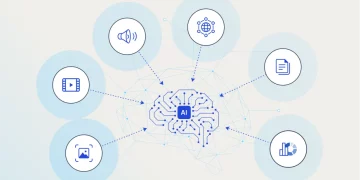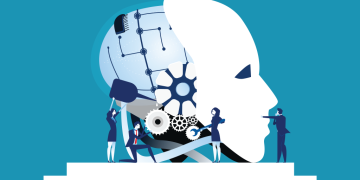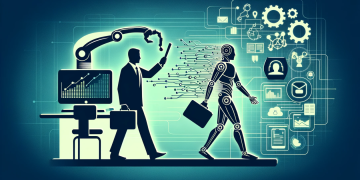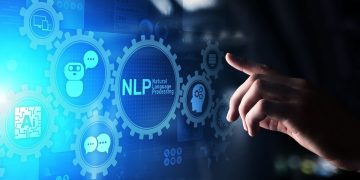Artificial Intelligence (AI) is no longer a concept confined to labs or experimental startups—it is a transformative force already at work across a wide range of industries. From finance to retail, AI is helping businesses improve efficiency, streamline operations, and deliver highly personalized and intelligent customer experiences. Rather than just automating tasks, AI is redefining how organizations create value.
This article explores how companies in finance and retail are applying AI in real-world scenarios and what these examples teach us about the future of innovation and operational excellence.
AI in Finance: Smarter Decisions and Streamlined Operations
Financial institutions have embraced AI as a way to process vast amounts of data more efficiently, manage risk more accurately, and offer better customer service.
Fraud Detection and Risk Management
AI is revolutionizing fraud detection by identifying suspicious transactions in real-time. Unlike traditional rule-based systems, machine learning algorithms can learn from evolving patterns, allowing for proactive prevention of financial crimes. Banks such as JPMorgan Chase have integrated AI systems that significantly reduce false positives while increasing fraud detection accuracy.
Similarly, AI is improving credit risk assessment by analyzing alternative data sources, including digital payment histories, mobile behavior, and other non-traditional indicators. This is especially useful for serving underbanked populations and assessing borrowers who lack conventional credit histories.
Algorithmic Trading and Portfolio Management
Investment firms are increasingly using AI for algorithmic trading and portfolio optimization. These models analyze real-time market trends, historical data, and risk factors to make fast, data-driven investment decisions. Firms like BlackRock use AI-driven platforms to assess market risks and dynamically adjust asset allocations.
Customer Service Automation
Banks are deploying AI-powered virtual assistants to handle customer queries at scale. These systems use natural language processing (NLP) to understand questions, provide answers, and guide users through banking services such as bill payments, budgeting, and account management. For example, Bank of America’s virtual assistant, Erica, has handled over a billion interactions and continues to improve through user feedback and learning.
AI in Retail: Personalized Engagement and Operational Efficiency
The retail industry is using AI not only to reduce operational costs but to create richer, more personalized shopping experiences that drive customer loyalty and increase revenue.
Personalized Recommendations
Retailers are leveraging AI to analyze browsing history, purchase behavior, and customer preferences in real time. Recommendation engines, like the one used by Amazon, suggest products with high accuracy, accounting for a significant portion of sales. These personalized experiences keep customers engaged and improve conversion rates.
Inventory Optimization and Supply Chain Management
Retailers must manage complex supply chains and fluctuating demand across regions. AI enables predictive demand forecasting, dynamic pricing, and real-time inventory tracking. Companies like Walmart use AI to analyze data across stores and warehouses to optimize product distribution and minimize waste.
Customer Support and Conversational AI
Retailers are adopting AI chatbots to handle customer support—answering questions about products, returns, and orders. These bots are available 24/7 and increasingly capable of understanding nuanced customer needs. Brands like H&M and Sephora have implemented chatbots that guide users through product discovery, sizing, and purchase decisions, improving satisfaction and reducing drop-offs.
Visual Search and Augmented Shopping
AI-powered computer vision allows users to search for products by uploading images. This visual search functionality helps customers quickly find similar styles or items online. Some retailers integrate AI with augmented reality (AR) so shoppers can “try on” products like clothing or makeup virtually. IKEA’s and Sephora’s mobile apps have both demonstrated how immersive, AI-enabled experiences drive online engagement.

Cross-Industry AI Capabilities Fueling Transformation
In addition to these industry-specific applications, several core AI technologies are driving transformation across sectors:
- Natural Language Processing (NLP): Enables businesses to extract insights from text and voice data, automate documentation, and interact with customers in human-like ways.
- Robotic Process Automation (RPA): Combines with AI to automate repetitive back-office tasks like data entry, invoice processing, and compliance reporting.
- Predictive Analytics: Allows companies to forecast trends such as customer churn, supply chain disruptions, and future demand based on historical and real-time data.
These tools are being adopted in healthcare, manufacturing, logistics, education, and beyond—demonstrating the horizontal scalability of AI.
Business Benefits of AI Implementation
Companies adopting AI consistently report gains across several key dimensions:
AI improves operational efficiency by automating manual tasks and reducing errors. It enables cost savings through better resource allocation, optimized inventory management, and minimized waste. Customer satisfaction increases when AI delivers personalized, responsive, and seamless experiences. AI also empowers organizations to be more agile, making faster decisions and responding proactively to changing market dynamics.
Beyond performance, AI is helping businesses become more scalable. Once developed and trained, AI systems can handle large volumes of tasks without the need for proportional increases in human labor.
Challenges and Considerations
While the benefits are clear, AI adoption is not without challenges. The quality of data remains a critical success factor. Incomplete, biased, or siloed data can lead to poor decisions and even reputational damage. There are also concerns about transparency and accountability—especially when AI models behave like “black boxes” with outputs that are difficult to interpret or explain.
Moreover, as AI automates more roles, questions around workforce reskilling and employment impact must be addressed. Ethical considerations and regulations are evolving, but organizations need clear governance structures to ensure AI is used responsibly.
Conclusion: AI as a Strategic Business Enabler
From fraud detection in finance to personalized experiences in retail, AI is proving to be a powerful enabler of both operational efficiency and service innovation. The organizations leading in AI adoption are not just reducing costs—they’re creating entirely new ways to engage with customers, differentiate their services, and scale their operations.
Success in this new era depends not only on the technology itself but on how well companies align AI with strategy, ethics, and human insight. As AI continues to mature, it will increasingly define which businesses thrive, adapt, or fall behind in the global digital economy.
AI is not just transforming industries—it’s reshaping what it means to compete, create, and serve.











































